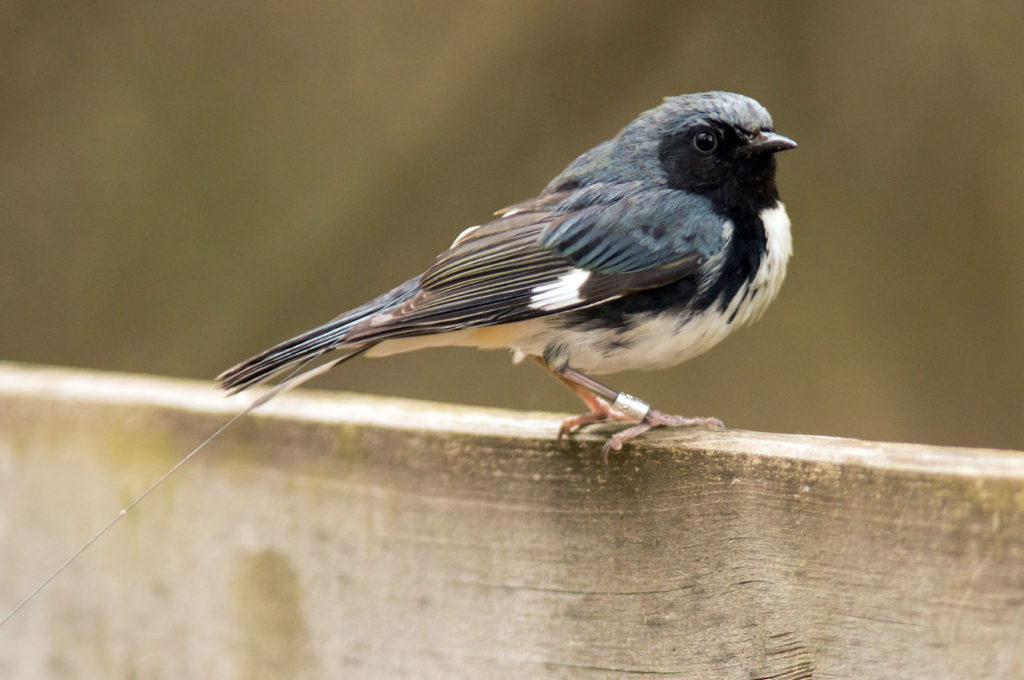Guest post by researcher Jessica Deakin
Linked paper: Sex differences in migratory restlessness behavior in a Nearctic–Neotropical songbird by J.E. Deakin, C.G. Guglielmo, and Y.E. Morbey, The Auk: Ornithological Advances.
Many species of migrant songbirds have a reproductive strategy called protandry, where males arrive at stopovers and breeding sites earlier than females. Ornithologists believe that males do this because it increases their mating opportunities and reduces competition among males for high-quality nest sites. Although it’s a common phenomenon, the question of how males arrive earlier is still unanswered for most species. One thing we do know is that the difference in arrival timing between males and females appears to be similar across years, suggesting that the behaviors that contribute to protandry are innate.
For this study, we evaluated potential innate contributors to protandry in the Black-throated Blue Warbler (Setophaga caerulescens). Black-throated Blue Warblers are small songbirds that spend the summer in North America and the winter in the Caribbean, migrating at night. They have a lazy, buzzy-sounding song, and males are easy to distinguish from females — the males are a brilliant blue, while the females are olive-brown. We caught Black-throated Blue Warblers at a stopover site in southern Ontario, Canada, during their fall migration and kept them at Western University’s Advanced Facility for Avian Research over the winter.
During migration, caged birds display a behavior called migratory restlessness, which is characterized by extensive hopping and wing whirring (the fluttering of wings while perched) at night. The timing of this behavior’s onset in the spring corresponds with when the birds typically depart from their overwintering grounds, and the intensity corresponds with the duration of their migration. We used automated video analysis software to quantify the onset and intensity of hopping and wing whirring of our captive Black-throated Blue Warblers when spring arrived. We found that migratory restlessness began earlier in males than in females, suggesting that males have an innate disposition to depart for spring migration. Surprisingly, we also found that males displayed higher intensity wing-whirring behavior than females, suggesting that the sexes may have innate differences in flight behavior that could influence their migration rate.

Next, we outfitted our Black-throated Blue Warblers with digital nano radio-tags and released them where they were caught the previous fall. The tags let us use the Motus Wildlife Tracking System to determine when they departed from the stopover site, and we also used manual telemetry to monitor their behavior. The birds behaved normally upon release, foraging, preening, and singing, and they departed in a normal northern spring migration direction. This suggests that migratory birds readjust quickly to the wild after being held in captivity for several months — important information for wildlife rehabilitators.
Overall, this study demonstrated that males and females have different migratory restlessness behavior. We think males might make longer flights than females between stopovers. Our future studies will include looking at sex differences in flight characteristics, such as wing morphology and energy use during migratory flight.
